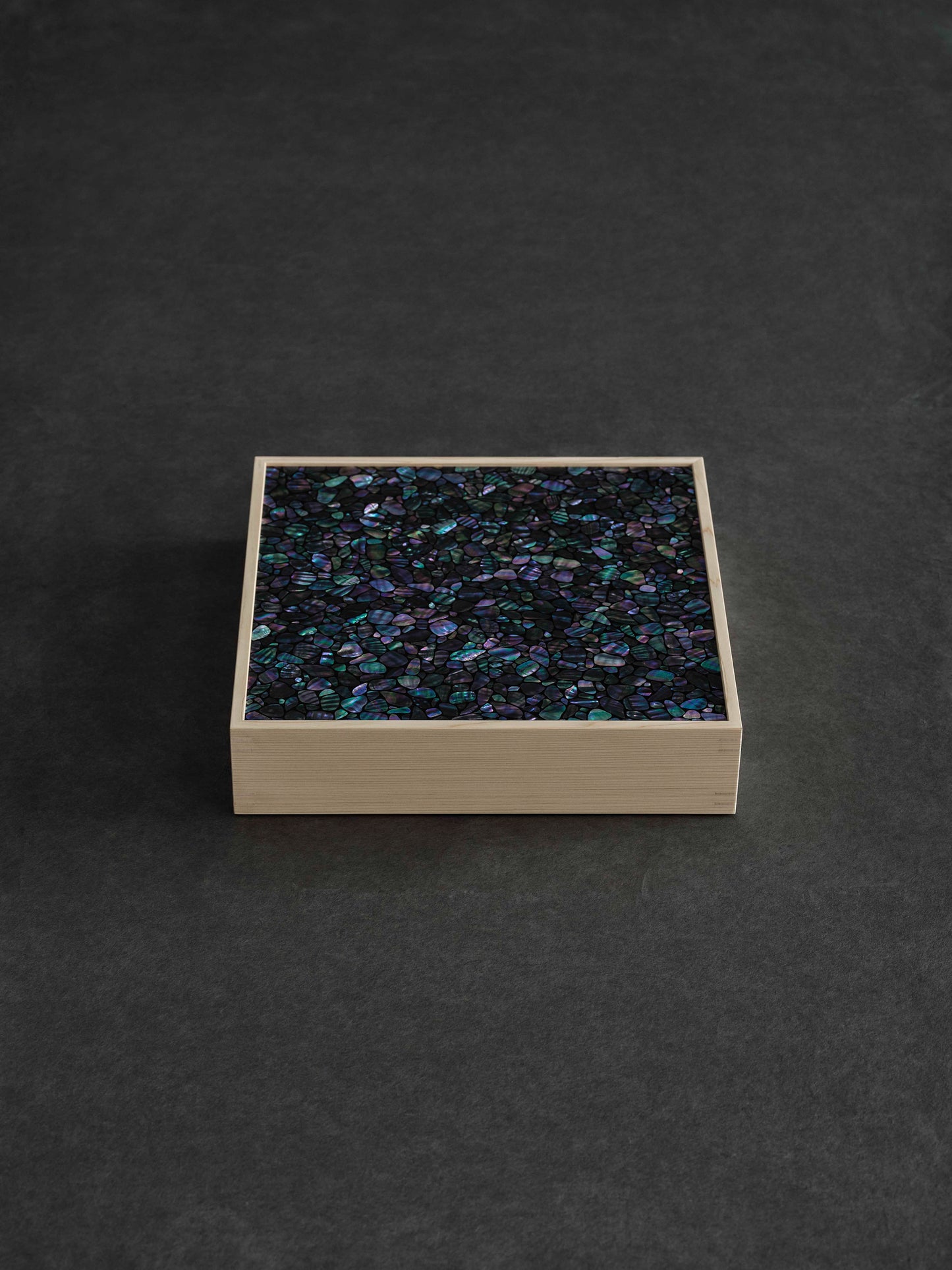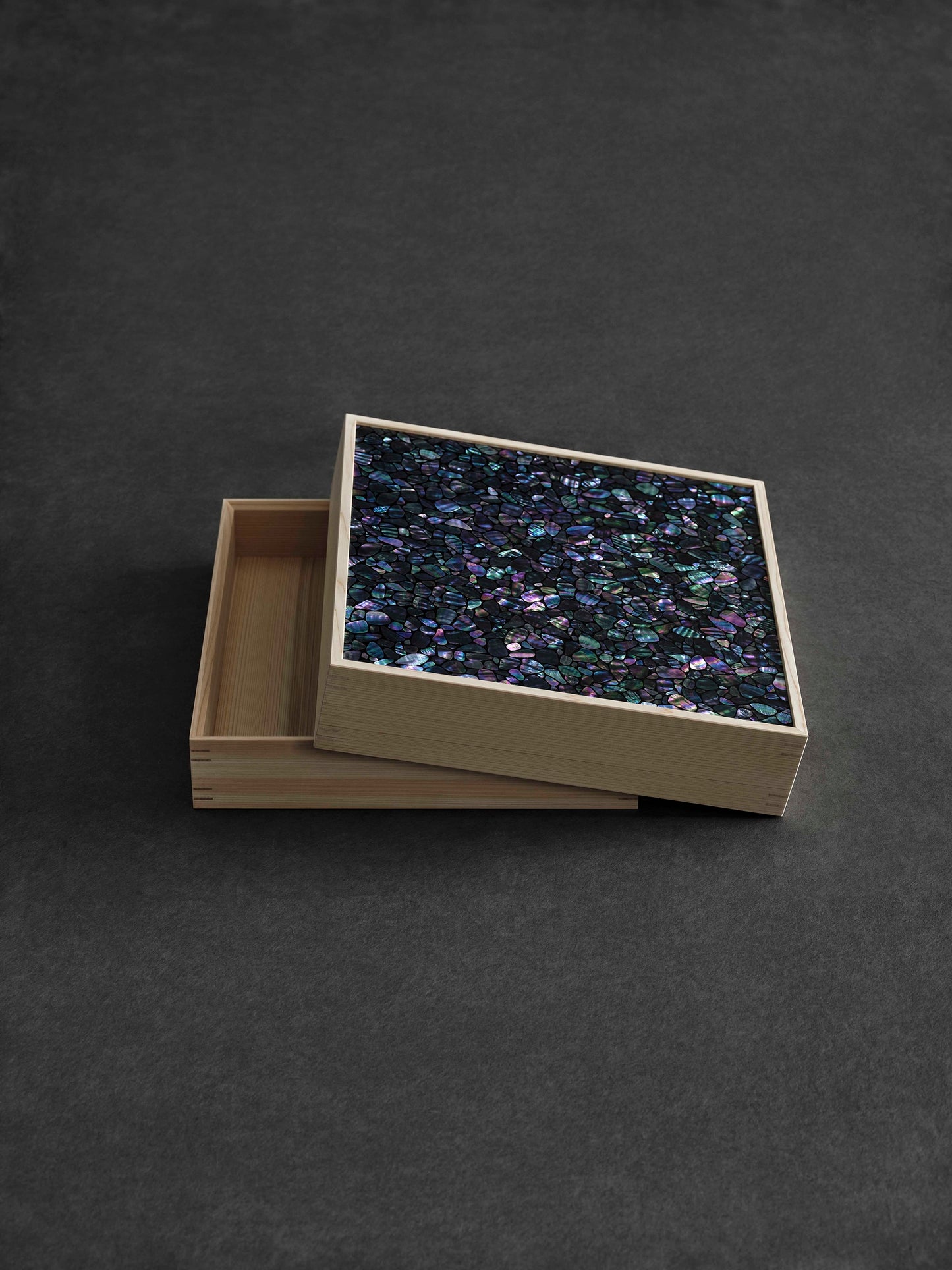Arare-koboshi (mother-of-pearl)
Arare-koboshi (mother-of-pearl)
Sold out
Hinoki cypress box with a mother-of-pearl inlay, inspired by the arare-koboshi (hailstorm) stone paths at Kyoto’s Katsura Imperial Villa. The lid pattern is the work of Takaoka-based raden artisans, who carefully compose the panel, balancing the size and colour of the myriad pieces of nacre. Decorated with extravagance, the treasure box is a work of art.
Sized to accommodate A4 documents, the box opens to reveal the sweet scent of hinoki cypress.
TB-04B / TB-04R
Size: W359×D359×H79.5 [mm]
Material: hinoki cypress, mother-of-pearl
Free shipping within Japan
Couldn't load pickup availability










MATERIAL
Mother-of-pearl
Mother-of-pearl inlays are produced by removing the inner shell layer, also known as nacre, from abalone, turban shells and silver-lipped pearl oysters. Once removed, the shell is thinned, shaped and inlaid into lacquer, wood or other materials. The technique arrived in Japan via mainland China around 1300 years ago and features among the renowned works housed within Shoso-in at Nara’s Todaiji Temple. The jewel-like shells are contrasted by the deep colours of the lacquer, shining with iridescence.
MANUFACTURE
Musashigawa Workshop
The city of Takaoka in Toyama prefecture is known for its production of exquisite mother-of-pearl inlays, in which shells are sanded down as thin as possible. Musashigawa Workshop was founded in 1910 by Tatsuo Musashigawa, who pioneered the local mother-of-pearl industry. Since then, four generations of fathers and sons have continued to lead the art in Takaoka. Takeshi Musashigawa, the fourth-generation master, handles all of the inlays for Amuami’s special boxes.
MANUFACTURE
Yoshihara Woodworks
Founded in 1958 in the city of Hamada, Shimane prefecture. In a workshop nestled in the hills, the company mainly produced wedding furniture in its early years, and is now known for fittings such as shoji screens and kumiko. Keiji Yoshihara, the second-generation master, renovated the facilities to “create an environment where craftspeople can work with pride”. The spacious studio is now also a training ground for many future artisans.
CARE
Usage precautions
- Due to the handmade nature of this item, some natural variations may occur.
- To remove dust, clean gently with a feather duster or similar tool that uses static electricity, or use an air sprayer.
- Place the item on a safe, stable surface.
- Contact with hot water may result in the lacquer turning white.
- If the item becomes wet, dry it immediately. Allowing the item to remain wet will result in mould forming.
- The item is made from soft, unfinished wood, so please handle it with care.
- Avoid exposure to direct sunlight and heat as this will result in discolouration and deterioration.














